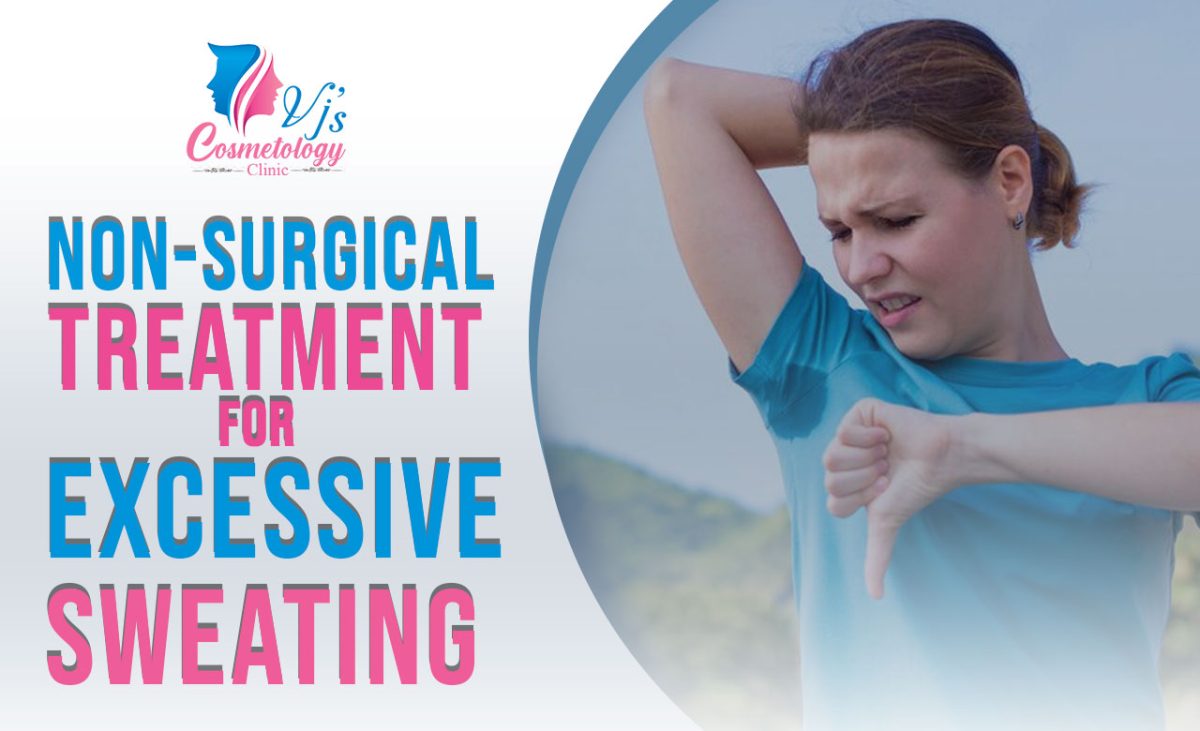Hyperhidrosis is excessive sweating. It causes your body to sweat more than it needs to, sometimes for no apparent reason. This condition may make you uncomfortable or embarrassed, but it’s expected. A healthcare provider can help you find a treatment that manages your symptoms. It could include special antiperspirants, medications or therapies. Contact the best dermatologist in Vizag for the treatment of Hyperhidrosis.
What is the definition of Hyperhidrosis?
The odourless liquid that is secreted by your eccrine glands is called sweat. The function of sweat is to assist in controlling body temperature and averting hyperthermia. Excessive sweating is called Hyperhidrosis. You develop this illness when you sweat more than your body requires to maintain temperature regulation. Sweating can happen randomly when you least expect it at rest or in a frigid environment. There are different types of Hyperhidrosis.
What are the different types of Hyperhidrosis?
There are two types of Hyperhidrosis.
- Principle focal Hyperhidrosis: Focal Hyperhidrosis is a long-term cutaneous ailment. This illness is brought on by a mutation in the DNA. From your biological family, you may inherit it.
- Secondary generalised Hyperhidrosis: Excessive perspiration that results from a drug side effect or an underlying medical problem is known as secondary generalised Hyperhidrosis.
Causes of the Hyperhidrosis
Different factors cause Hyperhidrosis.
- Certain emotions like stress, anxiety, fear or nervousness.
- Warm temperatures or humidity.
- Exercise or physical activity.
Some medicinal causes of Hyperhidrosis.
Several medicines cause over-sweating as a side effect of drugs.
- Albuterol
- Bupropion
- Hydrocodone.
- Insulin
- Levothyroxine.
- Lisinopril.
- Naproxen
- Omeprazole
- Sertraline
Some non-surgical treatments for Hyperhidrosis
Hyperhidrosis is when the sympathetic nervous system malfunctions, leading to excessive perspiration. Specific non-surgical procedures, such as the following, can sometimes be used to reduce sweating:
- Topical antiperspirants: These comprise aluminium chloride-containing antiperspirants. Usually, the first treatment attempted is a topical lotion called Drysol, which is applied twice to four times daily. It is frequently beneficial for people with the least severe symptoms, but the skin may chafe and crack as a result.
- Oral medications: Certain receptors on nerve receptors at involuntary nerve locations are blocked by anticholinergic medications like Robinul. People who have Hyperhidrosis have less sweat as a result. A few psychiatric medications, or medications that influence mental health, including amitriptyline, have also been given to treat Hyperhidrosis.
- Doctorionic Iontophoresis: With this treatment method, the hands or feet are submerged in an electrolyte solution, and an electrical current of low intensity is applied to them. It can lessen the issue or temporarily solve it when used daily. However, the process takes a while, and some people report mild to moderate pain during the operation.
- Botox: This material, derived from the botulinum toxin, is administered to the affected region. When it comes to palmar symptoms, Botox is generally less effective than it is for axillary Hyperhidrosis. When it does work, Botox takes three to four months to take action, and patients need to get shots frequently to see results.
Skin problems are widespread, and for the treatment, people go for cosmetic treatment. Cosmetic treatments are prevalent nowadays because people prefer outer beauty over inner beauty. If you are looking for the Best Skin Clinic in Vizag, contact the best doctor, Dr. C Vijay Kumar, at the best hospital for cosmetic surgery, VJ Cosmetology Clinics.


